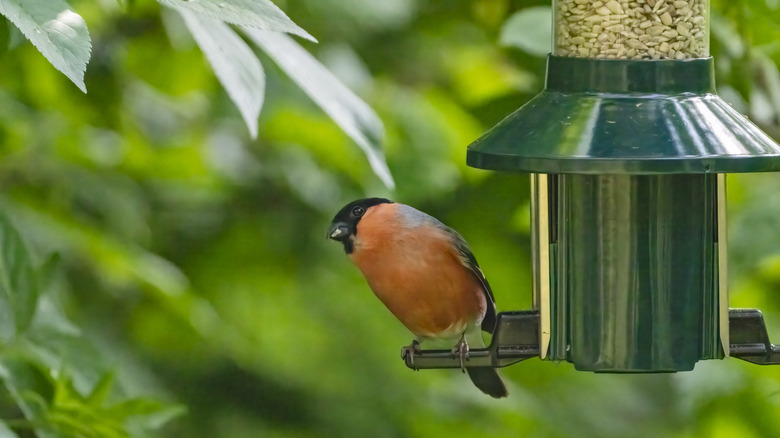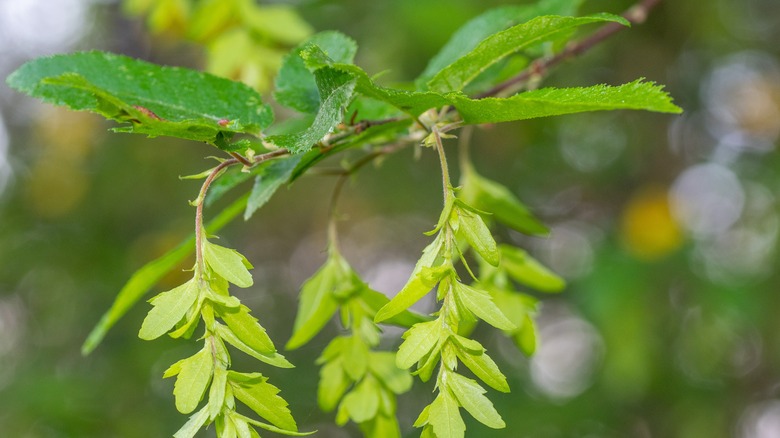The Small Native Tree That Will Make Your Yard A Bird-Friendly Escape
If you're keen to turn your yard into a bird-friendly escape, you should consider growing native species that birds will flock to because they provide a good food source and excellent shelter. One such species that grows into a small tree is the American hornbeam (Carpinus caroliniana). This shapely deciduous tree is native to the eastern U.S. states and can be successfully grown in USDA hardiness zones 3 through 9. The tree can reach a height of up to 40 feet, but it's fairly slow growing, and will only grow around 1 foot per year. In fact, it's one of numerous trees perfect for a small garden.
This attractive tree has lovely green leaves with toothed margins that turn a glorious orange-red color in the fall. From April through to June, the tree produces green catkin-type flowers that are followed by small ribbed nutlets. The flowers are adored by many small birds including finches and other songbirds, while the seeds are loved by ruffed grouse, wild turkeys, and quail, as well as mammals such as squirrels and foxes. As an added bonus, the American hornbeam is a larval host for a number of butterfly species including the Striped hairstreak, Eastern tiger swallowtail, Tiger swallowtail, and the Red-spotted purple. So, growing this tree in your yard has many advantages if you're trying to create a bird-friendly habitat.
How to grow the American hornbeam in your garden
The American hornbeam is one of the best small trees that can grow in the shade. However, it will also tolerate growing in a sunny spot and this will result in a more dense form as long as the tree is provided with plenty of moisture. It's not that particular about soil type, and because it grows naturally along riverbanks and streams, it can even suit sites that experience occasional flooding. However, it does prefer soils that contain plenty of organic matter and that have a slightly acidic pH around 6 to 8. The American hornbeam does not handle compacted soils well and is also not drought or heat-tolerant. This means that it will need to be kept well-watered during periods of dry weather.
If you want to plant this tree in your garden, you should do so in spring because it will establish much easier than if planted in the summer or fall where it might struggle to settle in. Apart from attracting birds and other wildlife to your yard, it makes an attractive shade tree in summer, provides glorious foliage color in the fall, and will delight you with its interesting bluish-gray bark on the outstanding fluted trunk. And, while you're looking for different ways to attract wildlife to your garden, you might also like to consider other bird-scaping tips that will help you turn your yard into a bird haven.

